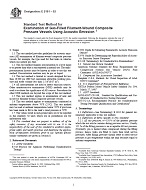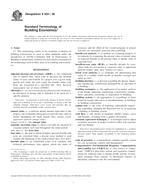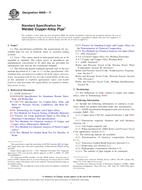1.1 This practice details the collection of active soil gas samples using a variety of sample collection techniques with tooling associated with direct push drilling technology (DPT) or manual-driven hand-sampling equipment, for the express purpose of conducting soil gas surveys.
1.2 This practice proceeds on the premise that soil gas surveys are primarily used for two (2) purposes, 1) as a preliminary site investigative tool and 2) for the monitoring of ongoing remediation activities.
1.3 The practicality of field use demands that soil gas surveys are relatively accurate, as well as being simple, quick, and inexpensive. This guide suggests that the objective of soil gas surveys is linked to three factors:
1.3.1 VOC detection and quantitation, including determination of depth of VOC contamination.
1.3.2 Sample retrieval ease and time.
1.3.3 Cost.
1.4 This practice will likely increase the awareness of a fundamental difference between soil gas sampling for the purpose of soil gas surveys versus sub-slab or vapor intrusion investigations or both. Specifically, the purpose of a soil gas survey is to provide quick and inexpensive data to the investigator that will allow the investigator to 1) develop a site investigation plan that is strategic in its efforts, 2) determine success or progress of on-going remedial activities, or 3) select the most suitable subsequent investigation equipment, or combinations thereof. On the other hand, the objective of soil gas sampling for sub-slab and vapor intrusion investigations (1, 2, 3, etc.) is not preliminary, but rather the end result of the site investigation or long-term precise monitoring. As such, stringent sampling methods and protocol are necessary for precise samples and data collection.
1.5 Details included in this practice include a broad spectrum of practices and applications of soil gas surveys, including:
1.5.1 Sample recovery and handling,
1.5.2 Sample analysis,
1.5.3 Data interpretation, and
1.5.4 Data reporting.
1.6 This practice suggests a variety of approaches useful to conducting successful soil gas surveys but cannot replace education or experience and should be used in conjunction with professional judgment. Not all aspects of this practice may be applicable in all circumstances. This ASTM standard is not intended to represent or replace the standard of care by which the adequacy of a given professional service must be judged, nor should this document be applied without consideration of a project's many unique aspects.
1.7 This practice offers an organized collection of information or a series of options and does not recommend a specific course of action. The success of any one soil gas survey methodology is strongly dependent upon the environment in which it is applied.
1.8 This practice is not to be used for long term monitoring of contaminated sites or for site closure conformation.
1.9 This practice is not to be used for passive determination of flow patterns at contaminated sites.
1.10 This practice does not purport to address all of the safety concerns, if any, associated with its use. It is the responsibility of the user of this practice to establish appropriate safety and health practices and determine the applicability of regulatory limitations prior to use.
1.11 This practice does not purport to set standard levels of acceptable risk. Use of this practice for purposes of risk assessment is wholly the responsibility of the user.
1.12 Concerns of practitioner liability or protection from or release from such liability, or both, are not addressed by this practice.
Product Details
- Published:
- 03/01/2012
- Number of Pages:
- 13
- File Size:
- 1 file , 480 KB


